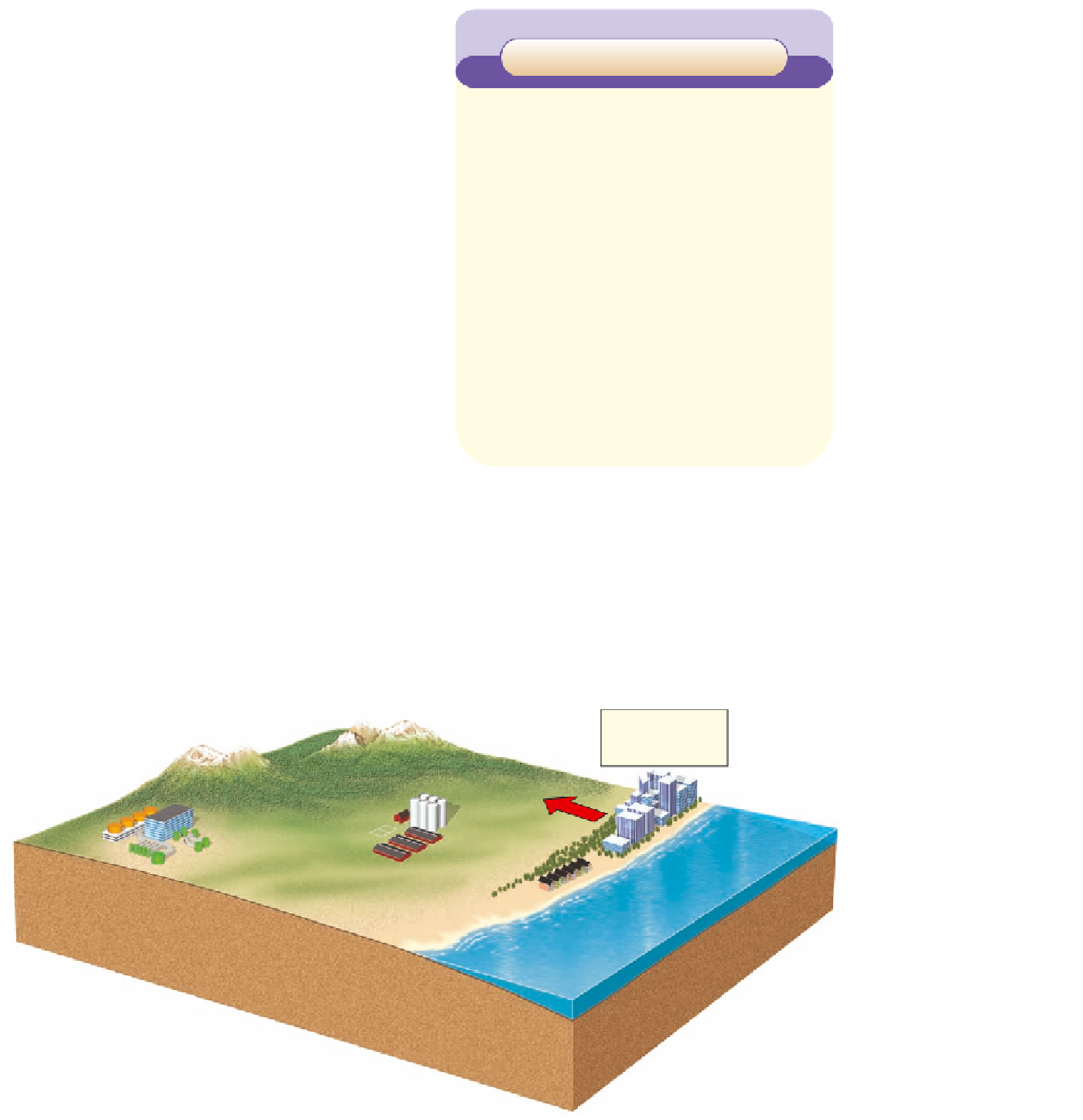Environmental Engineering Reference
In-Depth Information
which CO
2
emissions in the United States rose by 14%.
The Chinese government achieved this feat by phasing
out coal subsidies, shutting down inefficient coal-fired
electric plants, stepping up its 20-year commitment to
increase energy efficiency, and restructuring its econ-
omy to increase the use of renewable energy resources.
Since 1990, local governments in more than 500
cities around the world (including 110 U.S. cities) have
established programs to reduce their greenhouse gas
emissions. A growing number of major global compa-
nies, such as Alcoa, DuPont, IBM, Toyota, British
Petroleum (BP), and Shell, also have established tar-
gets to reduce, by 2010, their greenhouse-gas emis-
sions by 10-65% from 1990 levels.
Figure 16-15 lists some ways you can cut CO
2
emissions.
What Can You Do?
Reducing CO
2
Emissions
• Drive a fuel-efficient car, walk, bike, carpool, and
use mass transit
• Use energy-efficient windows
• Use energy-efficient appliances and lights
• Heavily insulate your house and seal all drafts
• Reduce garbage by recycling and reuse
• Insulate your hot water heater
• Use compact fluorescent bulbs
• Plant trees to shade your house during summer
Solutions: Preparing for Global Warming
Many countries and cities are looking for ways to
cope with the harmful effects of climate change.
According to the latest global climate models, the
world needs to reduce emissions of greenhouse gases
(not just CO
2
) by at least 50% by 2018 to stabilize con-
centrations of CO
2
in the air at their present levels.
Such a large reduction in emissions is extremely un-
likely because it would require rapid, widespread
changes in industrial processes, energy sources, trans-
portation options, and individual lifestyles.
• Set water heater no higher than 49
°
C (120
°
F)
• Wash laundry in warm or cold water
• Use low-flow shower head
Figure 16-15
Individuals matter:
ways to reduce your annual
emissions of CO
2
.
Critical thinking: which three of these actions
do you believe are the most important? Which things in this list
do you do or plan to do?
(Data from U.S. Department of Energy)
Figure 16-16
Solutions:
ways to prepare for the possible
long-term effects of climate change.
Critical thinking: which
three of these solutions do you believe are the most important?
Develop crops that
need less water
Waste less water
Connect wildlife
reserves with corridors
Move people away
from low-lying
coastal areas
Stockpile 1- to 5-year
supply of key foods
Move hazardous material storage
tanks away from coast
Prohibit new construction
on low-lying coastal areas
or build houses on stilts
Expand existing
wildlife reserves
toward poles







